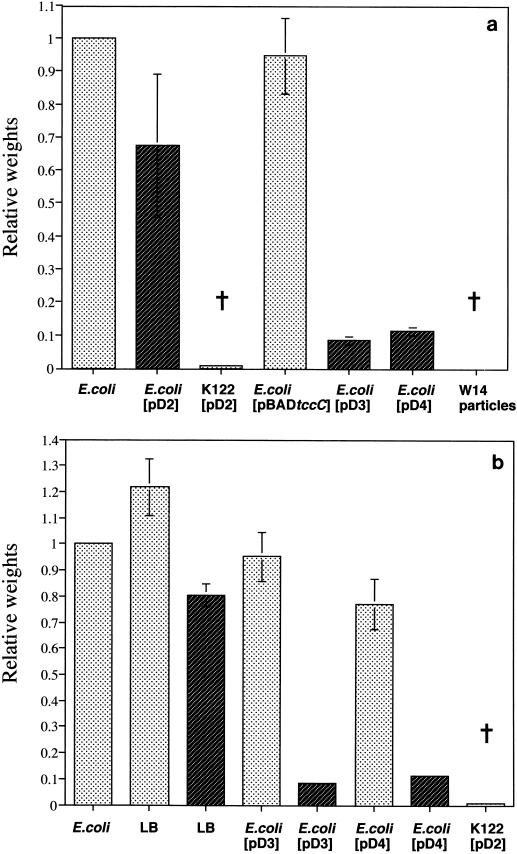FIG. 2.
Effect of the presence of TccC and mitomycin C induction on the oral toxicity of recombinant P. luminescens K122 and E. coli. (a) Histogram showing relative weight gain (mean and standard error for six larvae per treatment) of M. sexta fed on a diet treated with whole cultures of strains containing plasmids with or without tccC. Note that plasmids containing tccC alone [E. coli(pBADtccC)] do not inhibit weight gain, whereas plasmids carrying tcdAB in P. luminescens K122 [K122(pD2)] or tcdAB and tccC in E. coli [E. coli(pD3) and E. coli(pD4)] inhibit growth to 10% or less of the control weight. (b) Relative weight gain of larvae fed on supernatants grown in the presence (dark shading) or absence (light shading) of mitomycin C. Note that although some toxicity can be observed without mitomycin C [e.g., the 20% reduction seen with E. coli(pD4)], toxicity is substantially increased (∼90% weight reduction) by the addition of mitomycin C to cultures containing plasmids coexpressing both tcdAB and tccC [E. coli(pD3) and E. coli(pD4)]. The dagger represents a sample in which the mortality of the insects was 100%.

